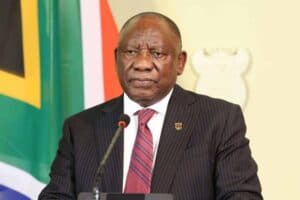Iranian survivors of a powerful earthquake that killed more than 400 people pleaded Wednesday for water, tents and other emergency supplies as aid trickled into remote villages near the Iraqi border.
The government ordered rescuers to keep searching for people trapped under rubble after the 7.3-magnitude quake which struck the mountainous region late Sunday, toppling buildings and leaving thousands homeless.
At least 432 people were killed in Iran, all in the western province of Kermanshah, and eight in Iraq, according to authorities in the two countries.
In total, nearly 8,200 people were reported to have been injured.
In Kouik, a village north of the badly hit city of Sar-e Pol-e Zahab, a convoy of about 20 ambulances arrived with medicine while Red Crescent teams brought tents, water, food, and blankets.
But much of the assistance came from volunteers, some of whom travelled more than 100 kilometres (62 miles) from a neighbouring province.
“God bless them!” resident Abdol Gader Ziaie, 45, said of those helping out, but “we need running water, electricity, and mobile toilets”.
Villagers have pitched tents around the rubble, and managed to salvage few household belongings and some mattresses.
Cows and sheep wander around the tents as survivors voice fears of disease breaking out because of the corpses of other animals under collapsed buildings.
Most villagers in Kouik are cattle farmers.
– Fears of ‘epidemics’ –
“Our homes are destroyed… But there are still animals buried under the rubble, and with the heat we are afraid of epidemics breaking out,” said Ziaie, 50, who pitched a tent for his family in what used to be his garden.
Kouik is arid and hilly. During the day temperatures soar to around 30 degrees Celsius (86 Fahrenheit) while the night is almost freezing.
Some women sobbed unconsolably, and one gently caressed the screen of her mobile phone showing a picture of her husband, who died in the quake.
On Wednesday, several teams of rescue workers from the Red Crescent and the army deployed in the villages around Kouik, AFP journalists said.
But for many residents in the stricken region, it is not enough.
“Thirty people died here. We buried them ourselves in coordination with the police,” said Tooraj Mohammadi in the nearby village of Ghaleh Bahadori.
Reza Boujani, a farmer, said the quake was “the will of God but the authorities must help us. We are poor and can’t do anything without the government’s aid”.
“They should help us rebuild our houses. Where will we sleep?” said his 90-year-old father, Morad Boujani.
Red Crescent emergency relief chief Morteza Salimi told state television Wednesday “we are focusing all our efforts” to ensure those made homeless by the quake would be housed in a relief centre.
And the official IRNA news agency said the army on Wednesday distributed 25,000 hot meals across the stricken villages.
The quake is estimated to have caused damage worth 26,000 billion Iranian rials (about $6.3 billion), Kermanshah provincial deputy governor Mojtaba Nikkerdar said, quoted by the ISNA news agency.
That is equivalent to about 1.5 percent of the Iranian gross domestic product (GDP) which the International Monetary Fund has forecast for 2017.
– ‘Guilty parties’ –
In total, about 30,000 homes were damaged or destroyed, Iranian authorities say.
Severe damage to social housing blocks in Sar-e Pol-e Zahab built under a scheme championed by former president Mahmoud Ahmadinejad sparked indignation on social media.
President Hassan Rouhani said those responsible would be held to account.
“The fact that houses built by individuals… are intact while buildings erected by the state are seriously damaged shows that there has been corruption,” he said.
Rouhani also said it was necessary to “look for the guilty parties and present them to the population”.
Interior Minister Abdolreza Rahmani Fazli told lawmakers that the authorities had sent 36,000 tents and another 10,000 would follow for families too fearful of aftershocks to sleep in their own homes, ISNA reported.
The cabinet approved a series of measures including interest-free loans and donations to affected households to replace their destroyed furniture or other belongings.
Iran’s arch-foe Israel offered aid for the quake victims, with Prime Minister Benjamin Netanyahu insisting his country has “no quarrel with the people of Iran”.
Iran sees frequent seismic activity.
In 1990, a 7.4-magnitude quake in northern Iran killed 40,000 people, injured 300,000 and left half a million homeless, reducing dozens of towns and nearly 2,000 villages to rubble.






